 Last additions - Suo-Oshima island 周防大島 Last additions - Suo-Oshima island 周防大島 |
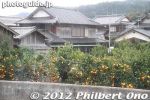
I enjoyed my day trip to Suo-Oshima. I want visit again and see their Hawaiian festival in summer and the southern coast. Suo-Oshima tourist Web siteJan 18, 2013
|
|

Jan 18, 2013
|
|
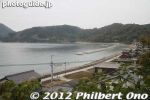
I took the bus back to Obatake Station in Yanai. It was about 25 miles.Jan 18, 2013
|
|
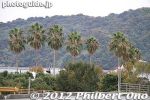
Didn't have time to see the Nagisa Aquarium adjacent to the Mutsu Memorial Museum.Jan 18, 2013
|
|

Jan 18, 2013
|
|

Area where Battleship Mutsu sank.Jan 18, 2013
|
|
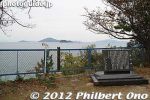
Area where Battleship Mutsu sank.Jan 18, 2013
|
|

About Battleship MutsuJan 18, 2013
|
|
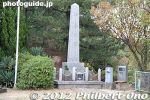
Monument for Battleship Mutsu.Jan 18, 2013
|
|

Piece of the bow that is displayed. Other gun turrets and parts from the Mutsu are displayed at the Etajima Naval Academy in Hiroshima, Yamato Museum in Kure, and Yasukuni Museum in Tokyo.Jan 18, 2013
|
|

Bow from Battleship Mutsu.Jan 18, 2013
|
|

Gun from the Battleship Mutsu.Jan 18, 2013
|
|
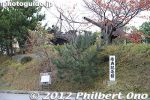
Large pieces of the Battleship Mutsu were also displayed outside.Jan 18, 2013
|
|
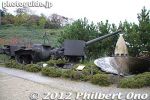
Propeller on the right.Jan 18, 2013
|
|
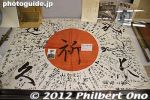
Jan 18, 2013
|
|
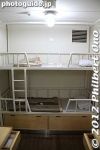
Replica of bunk beds on the Battleship Mutsu.Jan 18, 2013
|
|
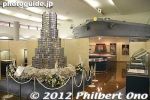
Jan 18, 2013
|
|
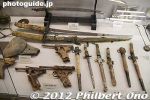
Swords and pistols from Battleship Mutsu.Jan 18, 2013
|
|
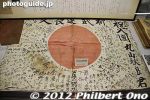
Jan 18, 2013
|
|

Porthole from Battleship Mutsu.Jan 18, 2013
|
|
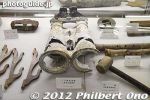
Binoculars from Battleship Mutsu.Jan 18, 2013
|
|

Sketch of what the Battleship Mutsu looked like on the sea bottom.Jan 18, 2013
|
|
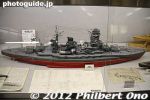
Model of the Mutsu.Jan 18, 2013
|
|

Photos of when Battleship Mutsu was salvaged during 1970-1978. About 75% of the ship was recovered.Jan 18, 2013
|
|
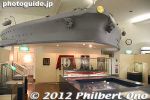
Jan 18, 2013
|
|
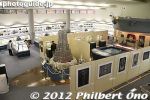
Personal articles of the crew are included.Jan 18, 2013
|
|
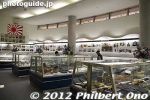
Many exhibits inside Mutsu Memorial Museum. When the Battleship Mutsu sank, 1,121 sailors died out of 1,474 crew. They hold a memorial service annually on June 8.Jan 18, 2013
|
|

Mutsu Memorial Museum first opened in 1972 in a previous location. The museum reopened here in 1994.Jan 18, 2013
|
|
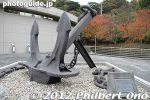
Anchor from Battleship Mutsu which was world's most powerful battleship when it was built in 1921. The museum is open 9 am to 4:30 pm. Admission 420 yen.Jan 18, 2013
|
|
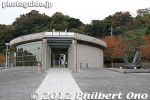
Mutsu Memorial Museum exhibits articles recovered by Battleship Mutsu that mysteriously exploded on June 8, 1943 and sank 3 km off the coast of Suo-Oshima. 陸奥記念館Jan 18, 2013
|
|
|
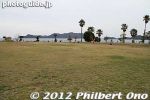
Nagisa Park is also a camping ground.Jan 18, 2013
|
|
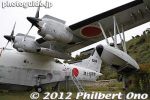
We couldn't enter the plane, probably because it was off-season.Jan 18, 2013
|
|

Jan 18, 2013
|
|
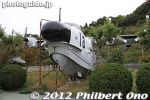
Jan 18, 2013
|
|

Nagisa Park had this retired sea plane from the Japan Maritime Self-Defense Force.Jan 18, 2013
|
|
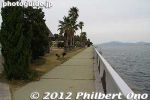
Next to Mutsu Park was Nagisa Park.Jan 18, 2013
|
|
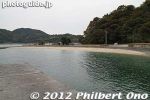
Jan 18, 2013
|
|
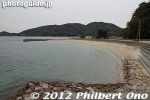
Small beach at Mutsu Park.Jan 18, 2013
|
|
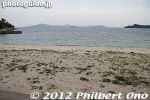
Jan 18, 2013
|
|

Another place I got off the bus was here at Mutsu Park and beach. This is at the top tip of the gold fish tail if you look at a map of the island.Jan 18, 2013
|
|
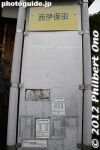
Nishi Ihota bus stopJan 18, 2013
|
|
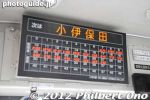
Bus fares.Jan 18, 2013
|
|
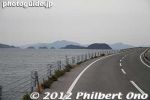
Jan 18, 2013
|
|
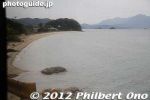
Jan 18, 2013
|
|
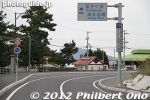
Jan 18, 2013
|
|
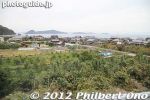
Jan 18, 2013
|
|
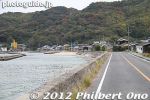
Jan 18, 2013
|
|
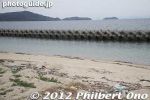
Jan 18, 2013
|
|
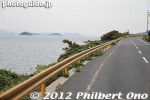
Jan 18, 2013
|
|

Jan 18, 2013
|
|
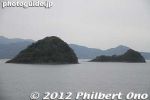
Jan 18, 2013
|
|

Jan 18, 2013
|
|
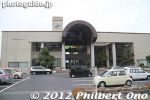
Towa Sogo Center, a community center in Towa.Jan 18, 2013
|
|
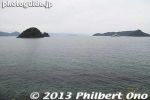
Jan 18, 2013
|
|
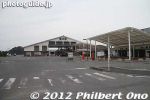
Sazanseto Towa tourist souvenir shop.Jan 18, 2013
|
|
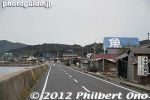
The island has many small fishing ports and towns.Jan 18, 2013
|
|

Jan 18, 2013
|
|
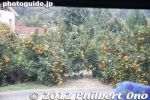
Suo-Oshima is famous for mikan tangerines. You see them often on the island.Jan 18, 2013
|
|
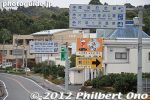
Jan 18, 2013
|
|
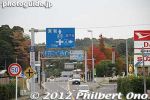
Approaching TowaJan 18, 2013
|
|
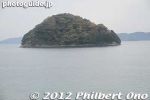
Jan 18, 2013
|
|
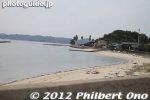
Jan 18, 2013
|
|
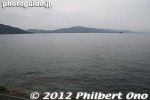
Jan 18, 2013
|
|
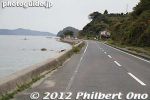
Back on the bus to ride further east on the northern coast.Jan 18, 2013
|
|

Jan 18, 2013
|
|
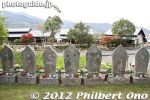
Jizo statues on Suo-Oshima island, Yamaguchi.Jan 18, 2013
|
|
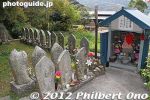
Jizo statuesJan 18, 2013
|
|
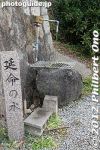
Water to extend your life.Jan 18, 2013
|
|

Jan 18, 2013
|
|
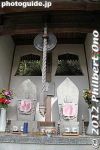
Jan 18, 2013
|
|
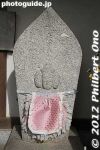
Jan 18, 2013
|
|

Around this area are 33 Kannon statues. Jan 18, 2013
|
|
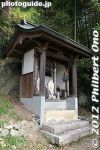
Here are two of the Kannon statues near the stone bath.Jan 18, 2013
|
|

Jan 18, 2013
|
|

The stone bath is the oldest in western Japan, built in the 12th century.Jan 18, 2013
|
|
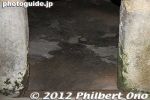
Jan 18, 2013
|
|
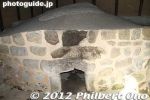
Old stone bath, Important Cultural Property.Jan 18, 2013
|
|
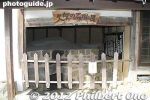
Jan 18, 2013
|
|
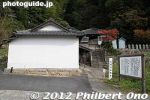
Old stone bathJan 18, 2013
|
|
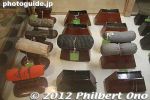
PillowsJan 18, 2013
|
|
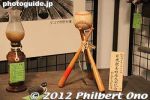
Japan-America goodwill baseball games.Jan 18, 2013
|
|
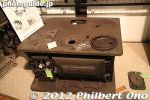
Many of the immigrants returned to Japan after their 3-year labor contract expired. They brought back all kinds of stuff even this heavy baking oven.Jan 18, 2013
|
|
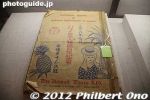
Jan 18, 2013
|
|

Certificate of Appreciation from 1927. Jan 18, 2013
|
|
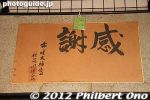
Kansha (thank you)Jan 18, 2013
|
|

Jan 18, 2013
|
|
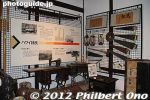
The Kuka Folk History Museum included this small exhibit on the island's emigrants to Hawai'i. It shows some of the stuff the emigrants brought back with them when they returned to Japan.Jan 18, 2013
|
|
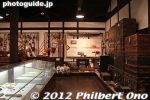
Jan 18, 2013
|
|
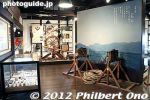
Jan 18, 2013
|
|
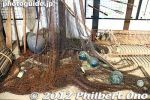
Fishing nets.Jan 18, 2013
|
|
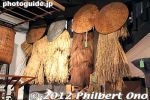
Snow coats.Jan 18, 2013
|
|
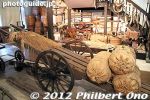
Jan 18, 2013
|
|
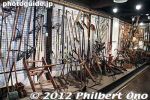
The museum has exhibits of local fishing and farming.Jan 18, 2013
|
|

Kuka also has this history museum called the Kuka Folk History Museum (久賀歴史民俗資料館). Open 9 am to 4:30 pm (enter by 4 pm). Closed Mon. Admission 400 yen.Jan 18, 2013
|
|

About the Hachiman Continuing Education Village in Japanese. Web site hereJan 18, 2013
|
|

Map of the Hachiman Continuing Education Village. It's basically a community/cultural center. They even hold hula and ukulele classes here. 八幡生涯学習のむらJan 18, 2013
|
|
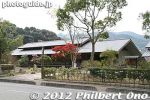
Kuka Folk History Museum is part of the learning village.Jan 18, 2013
|
|
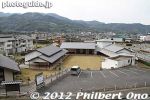
Hachiman Continuing Education Village has a folk history museum, meeting rooms, hall, cultural facilities, and a small cafe. 八幡生涯学習のむらJan 18, 2013
|
|
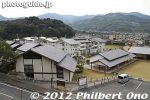
Kuka Folk History Museum Jan 18, 2013
|
|

On the island, I also visited the town of Kuka where there is a Hawaiian restaurant called Aloha Orange (unfortunately closed when I was there).Jan 18, 2013
|
|
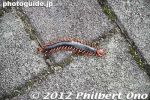
CentipedeJan 18, 2013
|
|
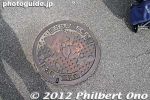
Suo-Oshima island, Yamaguchi manholeJan 18, 2013
|
|

Jan 18, 2013
|
|

Got off here at Suo-Hachiman stop in Kuka.Jan 18, 2013
|
|
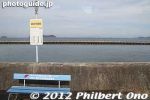
Rural bus stopJan 18, 2013
|
|
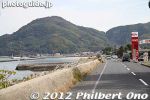
Jan 18, 2013
|
|
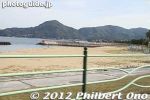
Once in a while, we saw a white-sand beach.Jan 18, 2013
|
|
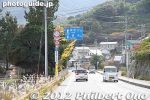
Jan 18, 2013
|
|
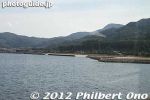
Jan 18, 2013
|
|
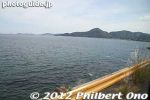
Jan 18, 2013
|
|

Jan 18, 2013
|
|
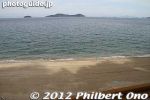
Jan 18, 2013
|
|
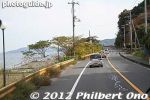
Jan 18, 2013
|
|
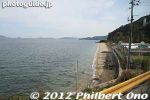
And a few white-sand beaches.Jan 18, 2013
|
|
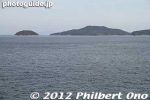
Jan 18, 2013
|
|

There are a few small islands near Suo-Oshima, uninhabited.Jan 18, 2013
|
|
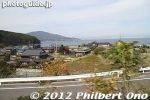
The main road runs along the northern coast for the most part. Just wanted to see what the island looked like.Jan 18, 2013
|
|

Jan 18, 2013
|
|
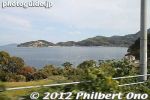
From the bus terminal, I took a bus running along Suo-Oshima's northern coast. Turned out to be quite scenic.Jan 18, 2013
|
|

Intersection at the end of Ohashi Bridge.Jan 18, 2013
|
|
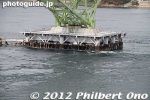
I saw a few small whirlpools.Jan 18, 2013
|
|
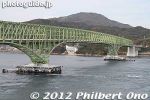
Oshima Ohashi Bridge. Across the bridge is Yanai.Jan 18, 2013
|
|

Oshima Ohashi BridgeJan 18, 2013
|
|
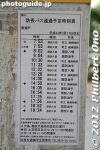
Bus schedule. Buses don't run that often.Jan 18, 2013
|
|
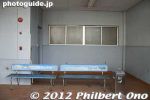
Bus stopJan 18, 2013
|
|
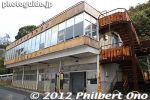
Bus terminal in central Oshima near Ohashi Bridge. Kind of run-down, former souvenir shop on the 2nd floor.Jan 18, 2013
|
|
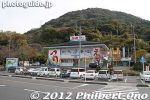
After seeing the nikkei museum, I tried to catch the taxi van to the bus terminal, but missed it. The museum staff kindly asked his friend to drive me to the bus terminal. Souvenir shop near Ohashi Bridge.Jan 18, 2013
|
|

View of Suo-Oshima from the 2nd floor of the museum. The island is quite well populated with houses and fishing ports in many locations.Jan 18, 2013
|
|
|
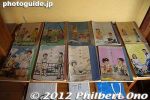
The museum also has two rooms full of Japanese school stuff. One room is full of books, scrapbooks, etc., donated by Ichisaburo Nakamura. He was a member of the Hawaii Kyoiku-kai (education council) which developed and published Japanese school textbooks.One of his scrapbooks had group photos of the Hawaii Kyoiku-kai who met every summer. I could recognize some of the faces. They were mainly Japanese school principals/teachers in Hawai'i. I spent a good amount of time in that room alone. Another room displayed old Japanese school textbooks including those published in Japan. I remember some of them from Japanese school and UH Manoa. Amazing to see all of them in one room.Jan 18, 2013
|
|

Old directory of all Japanese and Japanese-Americans living in Hawai'i. Never knew about this book.Jan 18, 2013
|
|
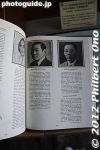
The scrapbooks and other delicate materials should be digitized though, something which they haven't done yet.Jan 18, 2013
|
|
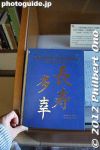
All the books in the museum are in open stacks where you can pull it out and read freely. Great for AJA researchers. Jan 18, 2013
|
|

People from Suo-Oshima were among the first boatload of Kan'yaku Imin immigrants to Hawai'i in 1885. They emigrated due to dire economic conditions on the island.Jan 18, 2013
|
|
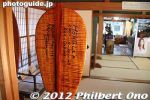
Oar from the Hokule'a signed by Nainoa Thompson when they visited Suo-Oshima in May 2007. That was a big event for the island and the Hawaiian community in Japan. I saw the Hokule'a only when they arrived at Yokohama.The Hokule'a is a traditional canoe where they use only the stars, wave motions, and bird observations for navigation like they did in ancient times. Nainoa was a pioneer in resurrecting and mastering this ancient form of navigation. You can read about their adventures on Suo-Oshima here, from May 20: Jan 18, 2013
|
|
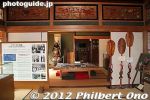
He knew immediately that I was from Hawai'i. That made me feel good actually, to know that I still haven't lost my Hawaiian traits even after living in Japan for many years.Jan 18, 2013
|
|

The museum staff person there could immediately tell that I was from Hawai'i even though I had said little more than "Hello" in fluent Japanese.Jan 18, 2013
|
|
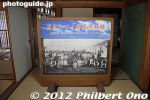
The museum is full of panel exhibits, mementos, artifacts, old books, and scrapbooks. It had a lot more than I had expected. Jan 18, 2013
|
|
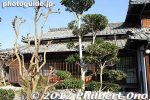
The museum is a spacious Japanese-style house.Jan 18, 2013
|
|
|
|

The museum is a large, two-story, Japanese-style house donated in 1997 by the family of Fukumoto Choemon (1881-1970) who emigrated to California and became successful and rich enough to build this house after returning to Japan. The museum opened in 1999.Jan 18, 2013
|
|
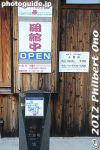
Go right for the front entrance.Jan 18, 2013
|
|
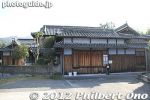
The Museum of Japanese Emigration to Hawaii.Jan 18, 2013
|
|
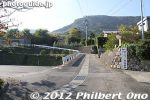
Jan 18, 2013
|
|
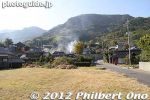
Museum up ahead.Jan 18, 2013
|
|

Then turn left as the sign says.Jan 18, 2013
|
|
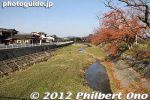
Cross the bridge over the river.Jan 18, 2013
|
|

The sign points the way.Jan 18, 2013
|
|
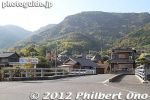
From the bus stop, cross this bridge over a river.Jan 18, 2013
|
|
|
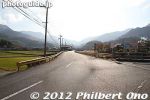
Jan 18, 2013
|
|

Bus schedule. Very few runs.Jan 18, 2013
|
|
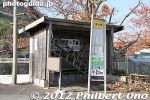
Bus stop closest to the Museum of Japanese Emigration to Hawaii.Jan 18, 2013
|
|
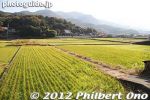
Because of this, the island has a sister-city relationship with Kauai and holds an annual Hawaiian festival in the summer.Jan 18, 2013
|
|
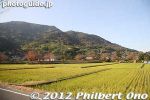
To me, the most significant thing about Suo-Oshima is that about 3,900 island residents emigrated to Hawai'i during the late 19th and early 20th centuries.Jan 18, 2013
|
|
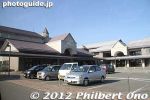
Suo-Oshima Town Hall was one of the stops of the nori-ai taxi.Jan 18, 2013
|
|

Jan 18, 2013
|
|
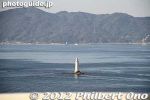
View from Oshima Ohashi Bridge.Jan 18, 2013
|
|

Crossing Oshima Ohashi Bridge.Jan 18, 2013
|
|
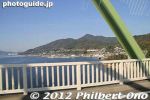
Crossing Oshima Ohashi Bridge.Jan 18, 2013
|
|
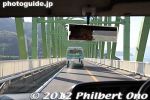
Crossing Oshima Ohashi Bridge.Jan 18, 2013
|
|

Crossing Oshima Ohashi Bridge.Jan 18, 2013
|
|
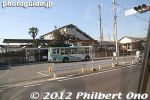
There is bus transportation from Obatake Station, but they run once an hour or so. If you want to visit the museum, you can take a nori-ai taxi (a small van) at Obatake Station costing 400 yen to the museum. The ride is maybe 10-15 min. or so.Jan 18, 2013
|
|
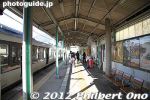
JR Obatake Station platform.Jan 18, 2013
|
|

Suo-Oshima is the third largest island in the Seto Inland Sea and slightly smaller than the Hawaiian island of Lanai. Population is almost 20,000. The island looks like a goldfish and easily accessible by bus/taxi from the mainland via Ohashi Bridge.Closest train station is Obatake Station not far from Iwakuni.Jan 18, 2013
|
|
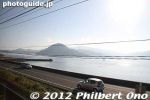
Approaching Obatake Station. Suo-Oshima island is in sight from the train.Jan 18, 2013
|
|
|
|
|